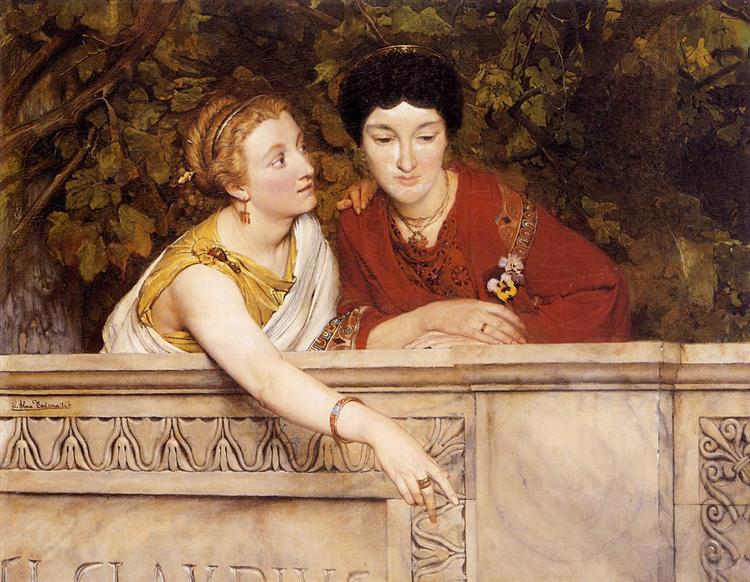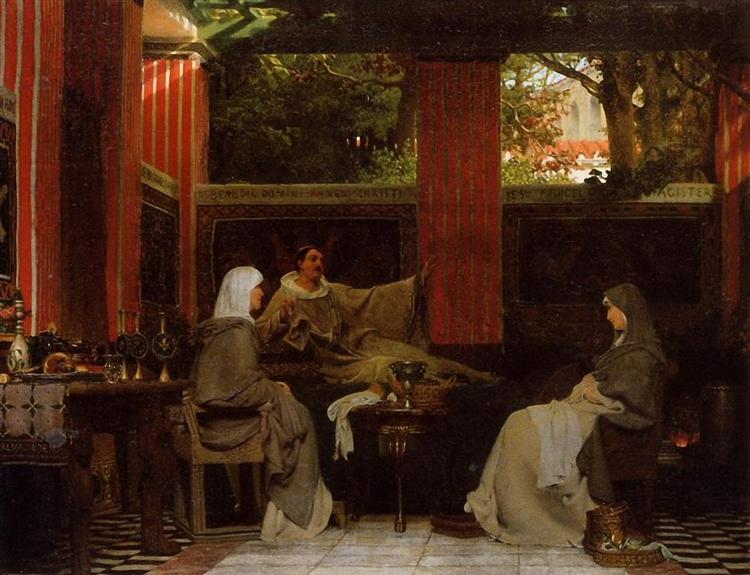Lawrence Alma-Tadema's painting The Education of the Children of Clovis captured my imagination from the first time I saw it. It captures fundamental details of the Frankish kingdoms ruled by the Merovingians.
 |
| The Education of the Children of Clovis, Lawrence Alma-Tadema. Wikipedia Commons. |
Present in the painting are the dynamism of the court, the violence of the kingdoms' repeated civil wars, the centrality of royal women, the clerics waiting to record history..and above all, the inseparable blend of Roman and Not Roman that makes the period absolutely intoxicating to study.
So when I finished writing my book, Friendship in the Merovingian Kingdoms: Venantius Fortunatus and His Contemporaries, there was only one image I wanted on the cover. This one, which says everything I hope that the book says.
Unfortunately, the painting is privately owned, and despite images of it being in the public domain, my publisher told me that copyright concerns would prevent us from using it.
I grasped at the straws of other Lawrence Alma-Tadema paintings, including this amazing depiction of some late Roman ladies but sadly these too presented copyright issues.
 |
| Gallo-Roman Women, Lawrence Alma-Tadema. Source: Wikiart. |
Alma-Tadema's Venantius Fortunatus Reading His Poems to Radegunda, which is absolutely delightful, would be a very strong choice, but this was used on the cover of Michael Roberts' splendid 2009 book about Fortunatus, The Humblest Sparrow, and I wanted my book to have its own image.
 |
| Source: Wikiart. |
(Isn't it an amazing painting? Look closely. The fine details of Fortunatus declaiming and of the room he, Radegund, and Agnes occupy, get me every time.)
The production editor suggested that I look specifically at digitised images from museum collections marked as free to reuse, so I made a shortlist of some alternatives.
A graceful, forlorn hand holding a scroll.
Marble left hand holding a scroll, Metropolitan Museum of Art |
A portrait of Venantius Fortunatus himself, wielding his pen, found in a medieval manuscript of one of his saints' lives.
 |
| Poitiers BM Ms 250 (136), f. 21v. |
There is another lovely image from the same manuscript which tempted me greatly--an illustration of one of the miracles of Fortunatus' beloved patron and friend Radegund.
 |
| Poitiers BM Ms 250 (136), f.37v. |
I love it because it looks like a small group of friends having a chat,
something which is very well in keeping with the themes of the book.
Finally, after sorting through all of these choices, I discovered that the Rijksmuseum seems to have a public domain version of a print of the The Education of the Sons of Clovis; not quite as vibrant as the painting but still full of life and movement and community--just like Merovingian friendships.
| Source: Europeana |
No comments:
Post a Comment